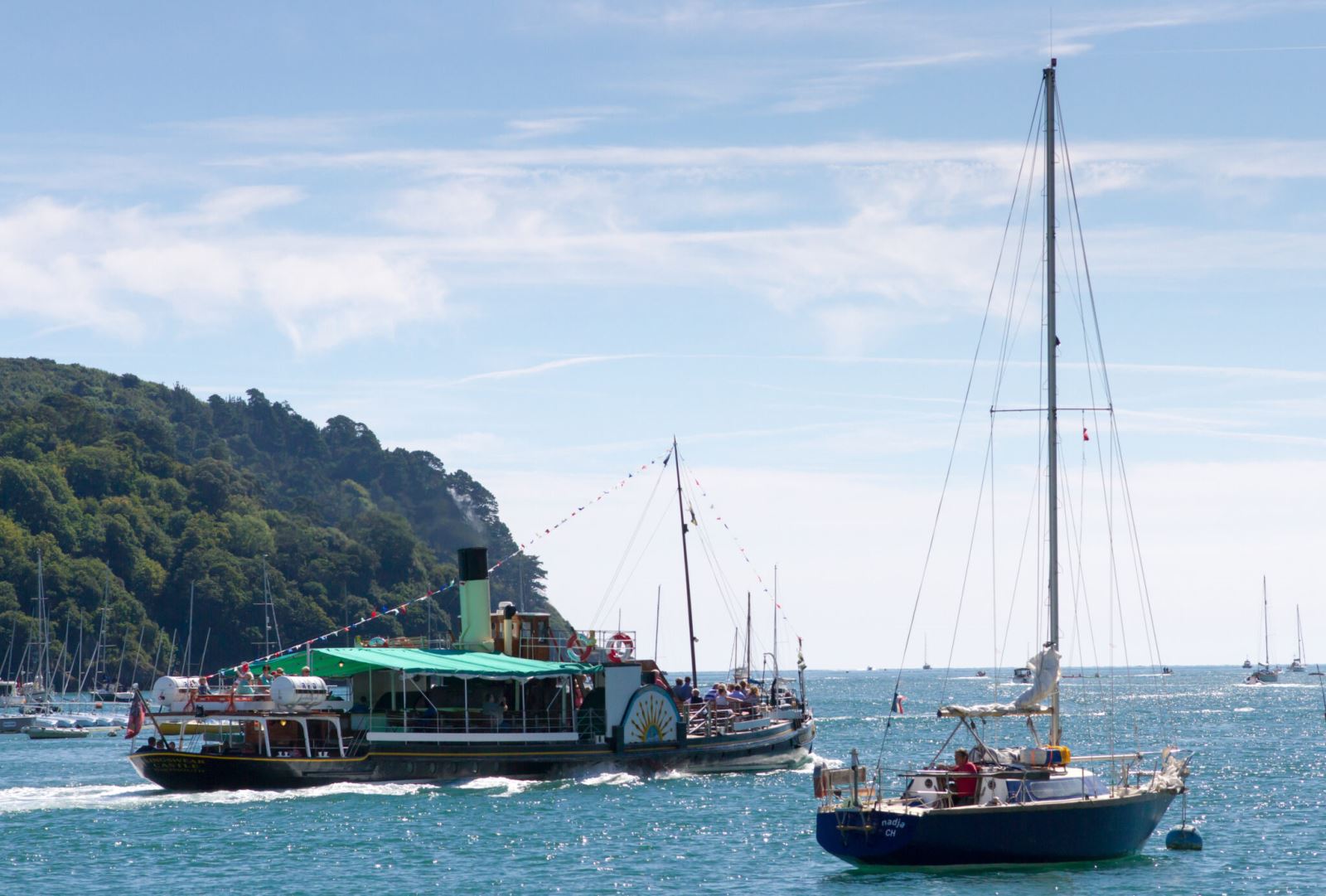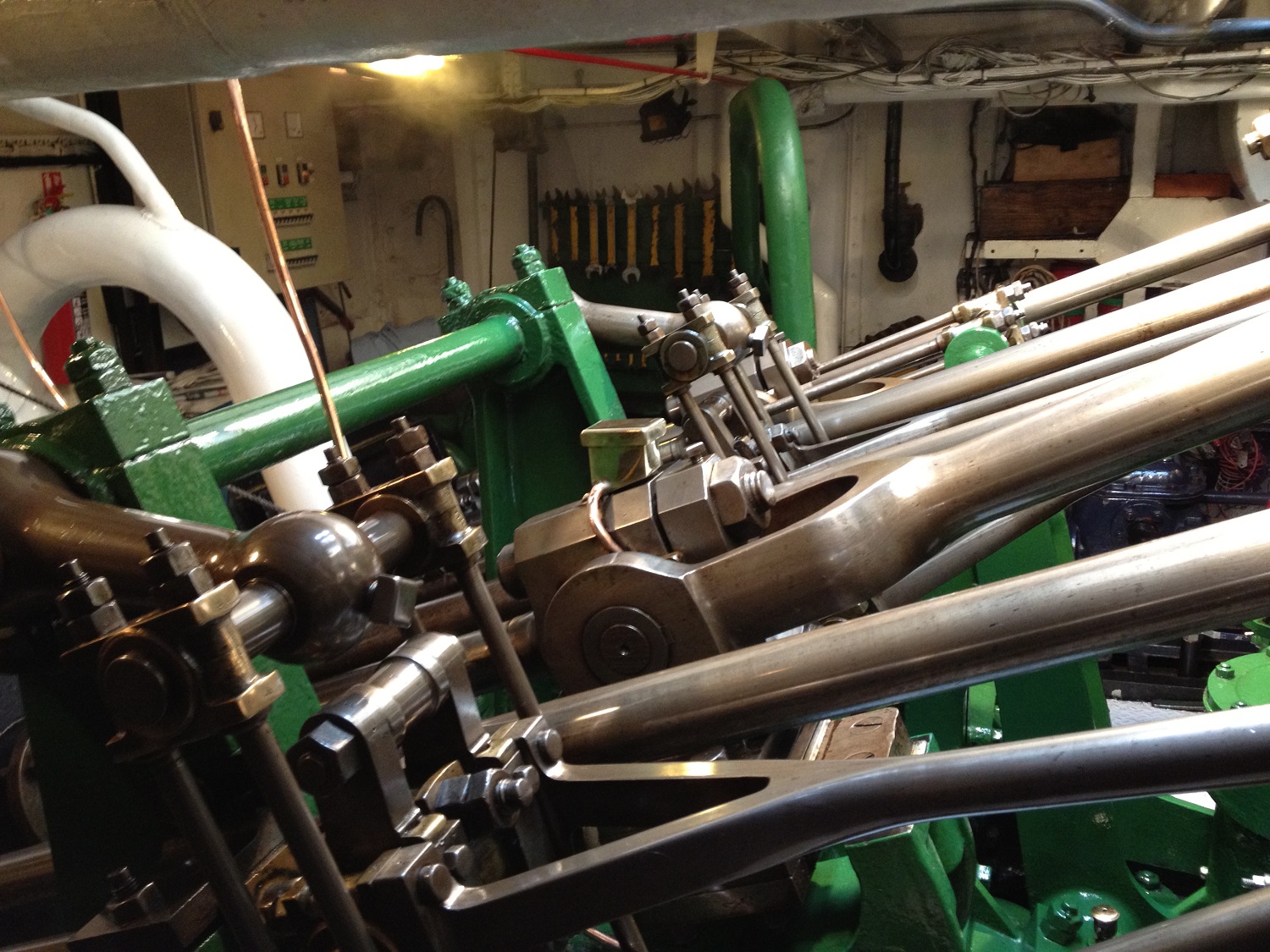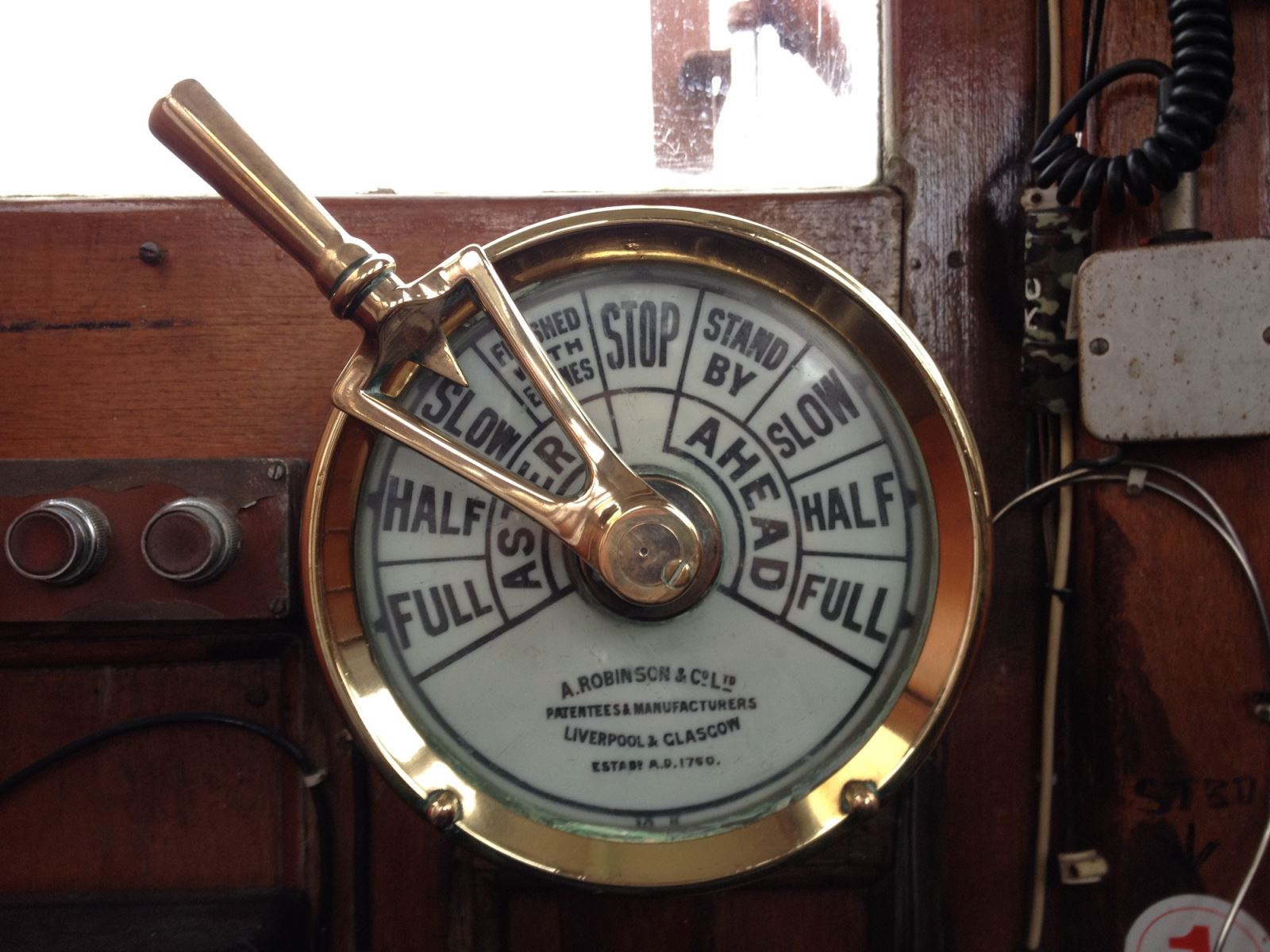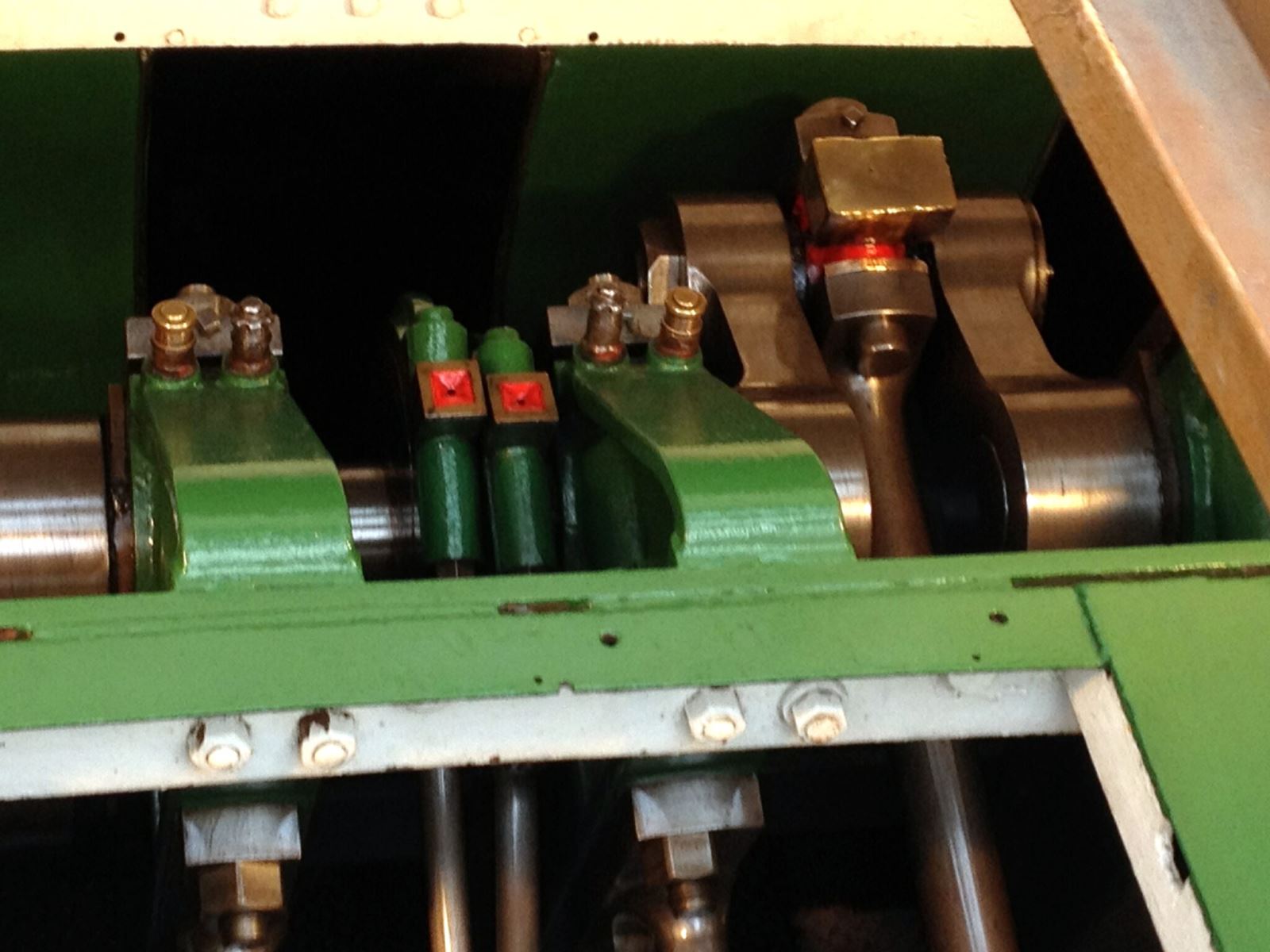
Author
We’re continuing on our journey to discover some of the most unusual jobs around the English Riviera and today we’re on the water with the UK’s last remaining coal fired paddle steamer at Dartmouth Steam Railway and River Boat Company.
Say hello to Daniel Wheeldon, the engineer for the paddle steamer ‘Kingswear Castle’. Dan started his training on the vessel in 2014 and for the last three years has been lead engineer – he joined the River Boat company in June 2011.

At 10:00 we leave the moorings and head into the berth on the main town jetty where we refill all our fresh water tanks, especially the boiler feed tank which is critical if there is an emergency.
Once the tanks are full we can start to embark our passengers for the first trip of the day. During the journey the work is pretty constant – maintaining boiler pressure, shovelling more coal, oiling the pumps and engine every 20 minutes or so, constantly checking and making small adjustments to keep everything running smoothly e.g. nip up rod glands or clear blockages from the bilge pump, etc.
The trip requires a faster running engine than usual as we were sailing on an unfavourable tide (i.e. the tide was going out so the engine had to work harder) and this resulted in plenty of coal shovelling to keep up!
All coal is obviously loaded manually and I shovel around ½ tonne on an average day.
Essentially, I am the equivalent of the fireman, driver and engineer on a steam train but doing all the tasks on my own!

I also need to be aware of where we are and constantly alert for instructions from the skipper. There is a telegraph that transmits instructions between the bridge and engine room and also a voice pipe for verbal communication (a telegraph is a communications device used on a ship or submarine) for the skipper on the bridge to order engineers in the engine room to power the vessel at a certain desired speed.
Traditional telegraphs required a pilot wanting to change speed to “ring” the telegraph on the bridge, moving the handle to a different position on the dial. This would ring a bell in the engine room and move their pointer to the position on the dial selected by the bridge.
The engineers hear the bell and move their handle to the same position to signal their acknowledgment of the order, and adjust the engine speed accordingly. Such an order is called a “bell”.

Another reason for being aware of where we are is so that I can manage the boiler accordingly. As we approach the end of the trip, I need to run down the fire to avoid the safety valves lifting and venting steam (if the pressure relief valve lifts and doesn’t seat back down properly then you lose all your steam).
Once back to the main town jetty we disembarked the passengers and loaded passengers for the next circular trip and the process started all over again.
There’s little chance for a break with a 15 minute turnaround so it’s a short comfort break and a drink before we set off on the next trip. This job is thirsty work and I drink around 10 pints of liquid in an average day.
12:00: We arrive back in Dartmouth and prepare for the second departure at 12:15. I check the fire and the safety checks are on-going all day anyway.
The engine is a bit like a Meccano Kit (!) in that there are lots of interlocking pieces and I am constantly checking that none have worked loose. If they have then I let the skipper know that we need to stop to tighten and then we move off once again.
There’s no time for relaxing as I have to be aware of instructions from the skipper e.g. the movement of ferries (there are three ferries on the river in Dartmouth – two are car ferries plus our passenger ferry between Dartmouth and Kingswear) and other vessels (pleasure cruisers, small dinghies and even military vessels!).

16:30: At the end of the scheduled day of cruises we had a break before heading over to Kingswear with the boat to refill the bunkers with coal which we do twice a week (Mondays and Thursdays). However, this doesn’t mean we have our feet up!
I carry out the “blowing down” (blowing water intentionally to avoid concentration of impurities during continuing evaporation of steam. The water is blown out of the boiler with some force by steam pressure within the boiler).
The vessel uses tap water and so we blow down to rid the tank of scale, etc. The water tank holds around ½ tonne (500 litres) of water.
18:55: we have to wait for our passenger ferry to finish for the day before we take the ship over to Kingswear for coal up. Once berthed in Kingswear we set to work shovelling the coal from a coal truck into wheelbarrows (the old fashioned way of course) and down to the boat and pour the coal into the bunkers.
It is a messy job as the bunker holes are smaller than the neck of the barrow but we always clean up after we have finished. Once we have cleaned the boat we head back to her moorings.
We’re nearly complete for the day but there are still a few tasks to complete before we finish for the day. The ashes and clinker are raked into a pile so the fire goes out gradually, the valves are closed and I complete the shutdown.
We leave the vessel at 20:45ish but not all days are this long.
The whole crew play their role in the smooth running of the operation of the ship. The skipper is obviously in charge and taking decisions regarding direction and speed, I am responsible for the running of the engine room, and the crew help with the commentary, clean and maintain the interior and exterior (touching up with paint when necessary) and tie the ropes, etc.
When you work with people all day in a role like this you do get to know them well and acquire a good sense of camaraderie.
We get a lot of compliments regarding the condition of the vessel. After all the hard work that is put in over the refit season (and during the season itself) this is always heartening to hear.
You really have to love this job to do it and it is wonderful to work on such an historic ship. I’ve been working on her for seven seasons now, it is hard work but can be very rewarding as the comments about how well looked after she is and can be motivating enough to make her look and run the best she can.
Related

A warm welcome awaits you at Dartmouth Steam Railway & River Boats. We provide steam train travel, river and sea cruises across the English Riviera and along the beautiful river Dart in South Devon.

The Western Lady Ferry Service has been operating an excellent ferry service between Torquay and Brixham for over 75 years. The 30 minute ferry ride across the Bay to Brixham and returning to Torquay is a stress-free, delightful way to view Torbay from the sea, especially when the sun is shining! Under the proud umbrella of Dartmouth Steam Railway & River Boat Company you can be assured of receiving the best service at the best price for your ferry across The Bay. We look after our valued passengers with many returning to us every year.

The paddle steamer Kingswear Castle is the last remaining coal-fired paddle steamer in operation in the UK today.
Comments
Comments are disabled for this post.







